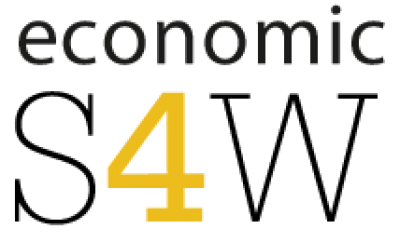Aboriginal and Torres Strait Islander (ATSI) women confront some of the most challenging economic circumstances within the Australian community. Educational attainment, income, workforce participation, health outcomes and home ownership are substantially lower for ATSI women than for the nation as a whole.
This paper draws together data and information which highlights the extent of the issues confronting ATSI women and proposes some policy initiatives that would help to address and correct the current situation. These changes are over and above the broader economic security issues for all Australian women noted in economic Security4Women’s (eS4W) White Paper of June 2018 which remain an important backdrop to addressing the gender disadvantage for Australian women.
Details:
As noted in eS4W’s White Paper Defining the concept of economic security for all women employment is a vital aspect of financial security. A paid job provides income, superannuation and opportunities for Australian women.
The workforce participation rate for ATSI women is 51.5 per cent compared with over 59 per cent for all Australian women. This relative shortfall in paid employment means that ATSI women have less financial security than other Australian women. The gap is driven in part by differences in skills, training and education opportunities and a limited number of opportunities in areas where many ATSI women live.
There has been progress in the number of ATSI women aged 15 years and over attaining a non-school education qualification. In 2002, just 26 per cent of such women had attained a qualification outside usual schooling. This has increased to 47 per cent which has been a vital development in increasing the employment and income earning potential for ATSI women. Schooling, education and training levels remain below the level for non-ATSI women.
Housing is a critical issue in financial security. Owning a home or having an income sufficient to maintain a mortgage on a housing purchase, leads to enhanced financial security.
ATSI women are at a substantial disadvantage relative to the rest of the population with a reliance on rented dwellings. According to Australian Bureau of Statistics data for Western Australia, just 9.2 per cent of households with at least one ATSI person own their house outright. This compares with 31 per cent of the overall population.
A further 25.3 per cent of ATSI households own a dwelling with a mortgage, which is below the national average of 37 per cent. Over 60 per cent of ATSI households rent their residence which is almost double the national average. Home ownership rates for ATSI peoples are impacted by the fact that in aboriginal communities, housing and therefore home ownership is prohibited by government control.
A critical issue for home ownership rates and a core issue for the economic security for ATSI women is the high incidence of single mothers which makes it extremely difficult to save a deposit for a home, and impacts negatively on their credit score when it comes to arranging a mortgage.
Health outcomes have a significant influence on financial well-being. People with fewer health problems have less sick leave from work and less time away caring for sick family members.
ATSI women have poorer health outcomes than the Australian average. These have been well documented across many studies and across many categories. Suffice to say, a critical part of improving the economic security for ATSI women will be driven by improved health outcomes.
All of these factors go to the point that the average gross household income for ATSI people is just 59 per cent of that for non-ATSI people which is the core of a lack of economic and financial security for ATSI women.
Policy proposals:
In addition to the broader policy issues to enhance the financial security for all Australian women, there are some issues specific to women in the ATSI community. If implemented well, these measures should close the gap in economic and financial outcomes for ATSI women. Many of the policy initiatives are interlinked and if they are rolled out in a complementary fashion, the benefits can be substantial.
In consultation and partnership with ATSI women, a program of financial education would provide critical background on issues relating to savings, credit card debt, wages, superannuation and mortgages.
While there has been welcome progress on broader schooling, education and training, ATSI women should be given greater opportunity to enhance their work-related skills and experience. A targeted strategy that accelerates vocational education and skills, including scholarships to university, is essential for employment opportunities.
As part of the post-COVID-19 economic recovery plan, the stimulus measures should include activities in regional and remote parts of Australia, where there is a concentration of ATSI people. These economic measures can create employment opportunities.
We also note that specific policies aimed at lifting the health of all ATSI people will bring economic benefits to women who are more inclined to be unpaid carers and less inclined to participate in paid employment if they or a family member is unwell.
Introduction of the Modular Online Time Use Survey (MOTUS)
Show you support – A Time Use Survey: the why, the who, the need, the when and the how.
#EPD2017 support women in sport
Women in all sports have been fighting for a decade for a level playing field – equal pay for equal value. So are we. How did they get this far and what does it mean for women playing and leading in sport today?
